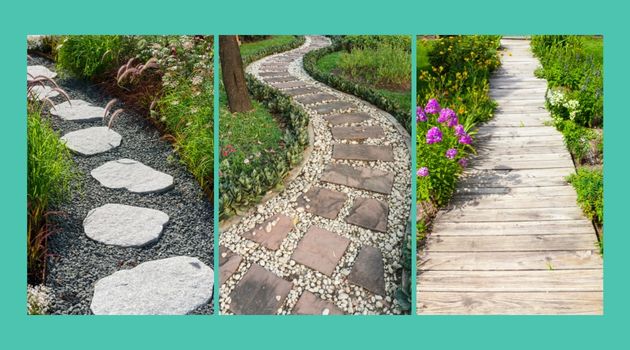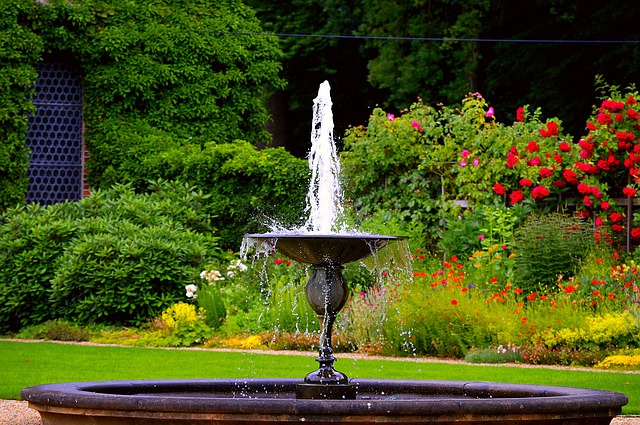Like most homeowners, you probably don’t think DIY landscaping skills are essential. After all, it’s easy to see why professional landscaping services can be so expensive – their work is complex and time-consuming. But what if you could get many of the same benefits without spending a fortune?
Five DIY Landscaping Skills to Learn
Here are five essential tips for do-it-yourself projects most people can master.
1. Add Charming Lighting High in the Trees
If you live in an area with tall trees, you know how difficult it can be to change a light bulb in one of the higher branches. It is dangerous to climb a high ladder, but it can also be challenging to reach the bulb itself. Fortunately, there is a simple solution: use a reliable Genie scissor lift. These scissor lifts offer a reliable and safe way to reach high trees. You can simply stand on the lift and raise it to reach tall trees and fix the lights in the branches to make your landscape more appealing and beautiful.

2. Mulching around your trees and flower beds (this is the easiest of our DIY landscaping skills)
Mulching is a great place to start if you want to give your landscaping a facelift. Mulch is a layer of material, typically organic matter like wood chips or bark that you spread over the ground around your plants. In addition to giving your landscape a tidy appearance, mulch provides several benefits for your plants.
It helps to prevent weeds by blocking sunlight and smothering weed seedlings. It also helps conserve moisture by slowing evaporation and stopping water from running. Furthermore, it can provide nutrients as it breaks down over time.
3. Fertilizing your grass, garden beds, and herb gardens
Applying fertilizer now gives your grass a head start on the growing season and helps it to withstand summer stressors like heat and drought better. But before you grab a bag of fertilizer from the garden center, it’s essential to understand the basics of lawn care. Here are a few tips to help you get started:
The first step is to test your soil. This will help you determine which nutrients are lacking and how much fertilizer to apply. You can purchase a soil test kit at your local nursery or garden center.
Once you’ve determined which nutrients your soil is lacking, it’s time to select a fertilizer. Select a fertilizer that contains the nutrients your soil lacks and follow the label’s directions for best results.
Applying fertilizer is a simple process, but there are a few things to remember. First, always wear gloves and protective eyewear when handling fertilizer. Second, be sure to apply the fertilizer evenly over the entire lawn. Avoid concentrated areas, as this can cause burns.
4. Creating a Path
A well-manicured lawn can add value to your property and provide an excellent space for entertaining guests or simply relaxing outdoors. However, achieving the perfect lawn can be a lot of work. Many tasks must be performed regularly, from mowing and watering to fertilizing and aerating. If you’re looking for a way to reduce your time on lawn care, consider creating a path. Paths can provide an attractive and practical solution for dividing your lawn into different areas. For example, you might want to create a path leading from your patio to your mailbox or from your front door to your driveway.
Creating a path is also great for getting creative with your DIY landscaping skills. Many materials can be used for paths, including pavers, stone, gravel, and mulch. With so many options available, it’s easy to find a material that fits your budget and style. For more information on creating paths, consult a landscape contractor or research online.

5. Installing a Water Feature
A water feature can add a touch of elegance to any landscape, and it can be a great do-it-yourself project for homeowners who want to spruce up their yard. There are a few things to remember when installing a water feature. First, it is essential to choose a location that is level and free of obstacles. Secondly, the size of the water feature should be appropriate for the size of the area. Too small, and it will get lost in the landscape; too large, and it will dominate the space.
Once you have chosen the perfect location and size for your water feature, you need to determine the type of water feature you want to install. The most popular options include fountains, ponds, and streams. Each has pros and cons, so do your research before deciding. Finally, it is crucial to consider the maintenance required for each type of water feature before purchasing.

The Takeaway: Mastery of These Five DIY Landscaping Skills Will Save You Money and Beautify Your Yard
Overall, landscaping has a few key things to keep in mind. First, create a path to divide your lawn and make lawn care more manageable. Next, consider installing a water feature to add beauty and value to your home. And finally, don’t forget about lighting! Planning and effort allow you to achieve the perfect landscape for your home. What DIY landscaping skills will you try first?

